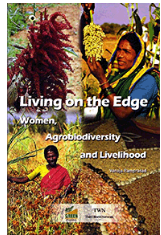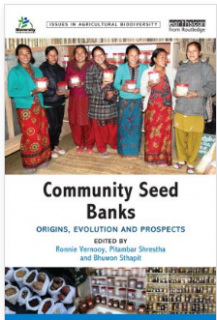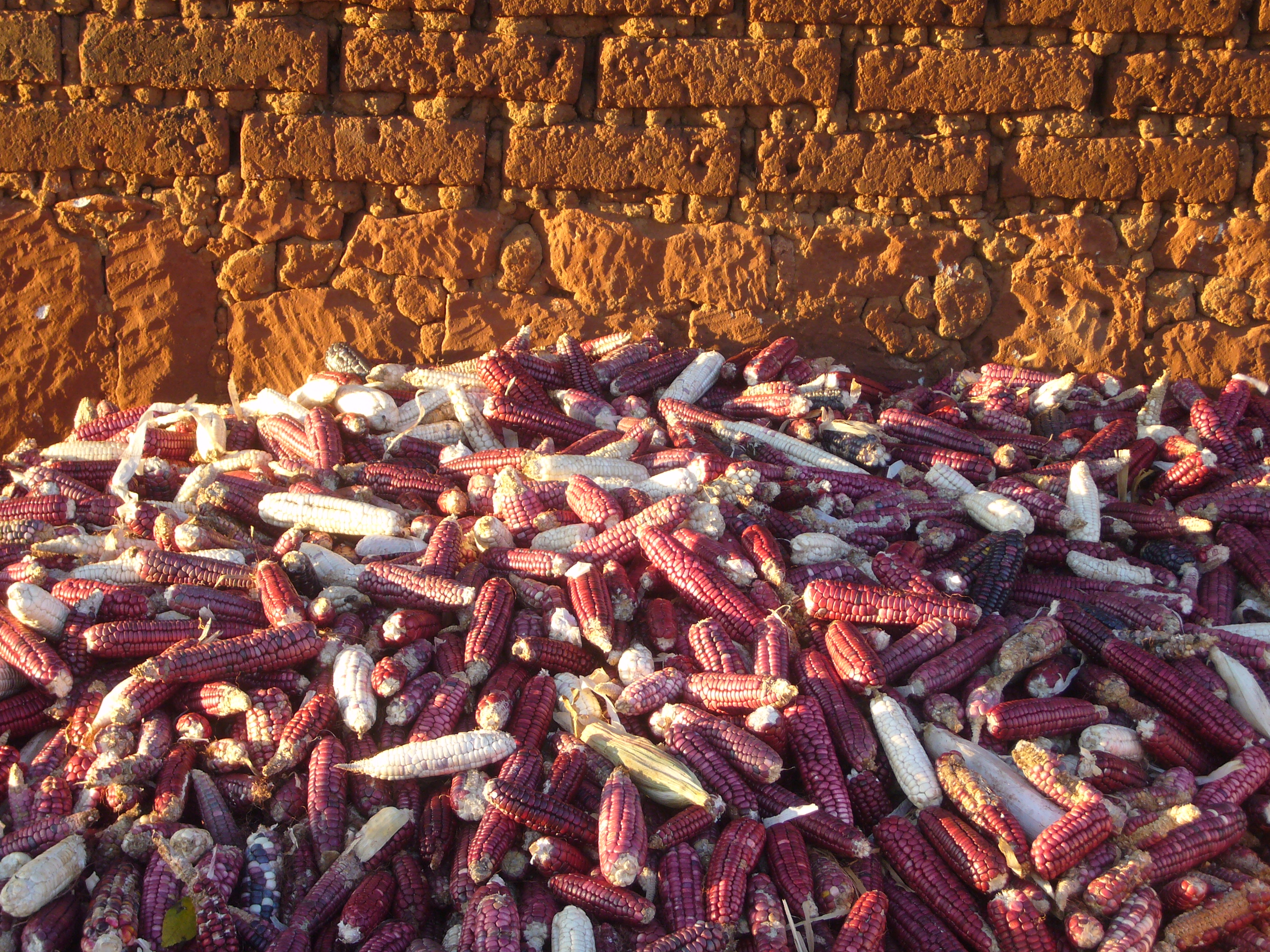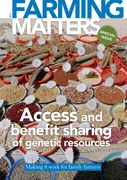Living on the Edge: Women, Agrobiodiversity and Livelihood
Living on the Edge: Women, Agrobiodiversity and Livelihood

It was a fundamental question that drove this author to begin a journey across India in 1974: How could surplus food production and malnutrition co-exist? Her numerous encounters with farmers convinced her that subsistence farmers, and women in particular, had the potential to become custodians of biodiversity, the key to food security. She set up the Green Foundation 25 years ago to work with smallholder farmers and initiated a network of seeds banks to revive and popularise traditional grains (see page xx). Vanaja Ramprasad’s monograph gives a bird’s-eye view of India’s agricultural practices through the ages, compares traditional and technology-intensive corporatised farming, examines the fine print in laws related to plant patenting and farmers’ rights, and argues that genetic diversity, not genetic engineering, is the solution to world hunger.
India’s staple crops have dwindled to just rice, wheat and maize. Although the Green Revolution was largely responsible for the country losing more than 90 % of its rice diversity, Ramprasad does not decry it outright. She believes that it undoubtedly alleviated hunger at a time when food security was the biggest challenge facing a newly independent India that had been ravaged by successive famines during the British colonial regime. However, she observes, the consequences of popularising just a few high-yielding, water-guzzling hybrids that require large doses of chemical fertilisers and pesticides have been catastrophic.
Green Foundation’s mission has been to reintroduce to India’s small scale farmers the millets and other traditional grains that adapt well to semi-arid tracts, resist pests and diseases, withstand drought, and require low inputs. But “who will be farming, and on what land?” the author asks succinctly. Ramprasad believes that a disastrous body-blow to the country’s food security can be deflected only if its policies address the needs of smallholder farmers, who form a sizeable though neglected chunk of the agriculturist population. Subsistence farmers, who once grew mixed crops on their fields and used hardy local varieties of seeds nourished by organic manure, are burdened by the expensive, high-input agricultural practices that mono-cropping and cash crops demand. Malnourished because they cannot afford to eat what little food they produce, they sell their land and migrate to cities as day wage labourers. Therefore it makes sense to help them retain their holdings and practise sustainable agriculture, because it would not only ensure their survival but also aid national efforts towards providing abundant, safe and healthy food for all.
The Green Foundation has been working against the odds by sourcing and propagating grains that have been ‘pushed into internal exile’ by monoculture. Ramprasad has reserved a chapter for the ‘seed mothers’ – exemplary women organic farmers who helped establish the seed banks that the Green Foundation initiated in 1994, where seeds can be stored, borrowed and exchanged.’ Ramprasad believes that organic farming should promote an agricultural system that is local, small scale, family-operated, and biologically and culturally diverse, so that organic produce can be accessible to the poor.
Review by C.K. MEENA
Community Seed Banks: Origins, evolution and prospects
Community Seed Banks Origins, Evolution and Prospects

Community seed banks first appeared towards the end of the 1980s, established with the support of international and national non-governmental organisations. This book is the first to provide a global review of their development and includes a wide range of case studies.
Countries that pioneered various types of community seed banks include Bangladesh, Brazil, Ethiopia, India, Nepal, Nicaragua, the Philippines and Zimbabwe. In the North, a particular type of community seed bank emerged known as a seed-savers network. Over time, the number and diversity of seed banks has grown. In Nepal, for example, there are now more than 100 self-described community seed banks whose functions range from pure conservation to commercial seed production. The book reviews their history, evolution, experiences, successes and failures (and reasons why), challenges and prospects. It fills a significant gap in the literature on agricultural biodiversity and conservation, and their contribution to food sovereignty and security.
Farmers’ rights in practice: Synthesis of the case studies on sustainable use of agrobiodiversity
Fondazione ACRA-CCS, 2013. 65 pages

Farmers’ rights in practice: Synthesis of the case studies on sustainable use of agrobiodiversity (PDF)
Organic Crop Breeding
Organic Crop Breeding
E. T. Lammerts van Buren and J. R. Myers, 2012. Wiley-Blackwell, Malaysia. 312 pages. IBSN: 978-0-470-95858-2
Organic Crop Breeding provides readers with a thorough review of the latest efforts by crop breeders and geneticists to develop improved varieties for organic production. The book opens with chapters looking at breeding efforts that focus on specific valuable traits such as quality, pest and disease resistance as well as the impacts improved breeding efforts can have on organic production. The second part of the book is a series of crop specific case studies that look at breeding efforts currently underway from around the world in crops ranging from carrots to corn. Organic Crop Breeding includes chapters from leading researchers in the field and is carefully edited by two pioneers in the field. Organic Crop Breeding provides valuable insight for crop breeders, geneticist, crop science professionals, researchers, and advanced students in this quickly emerging field.


